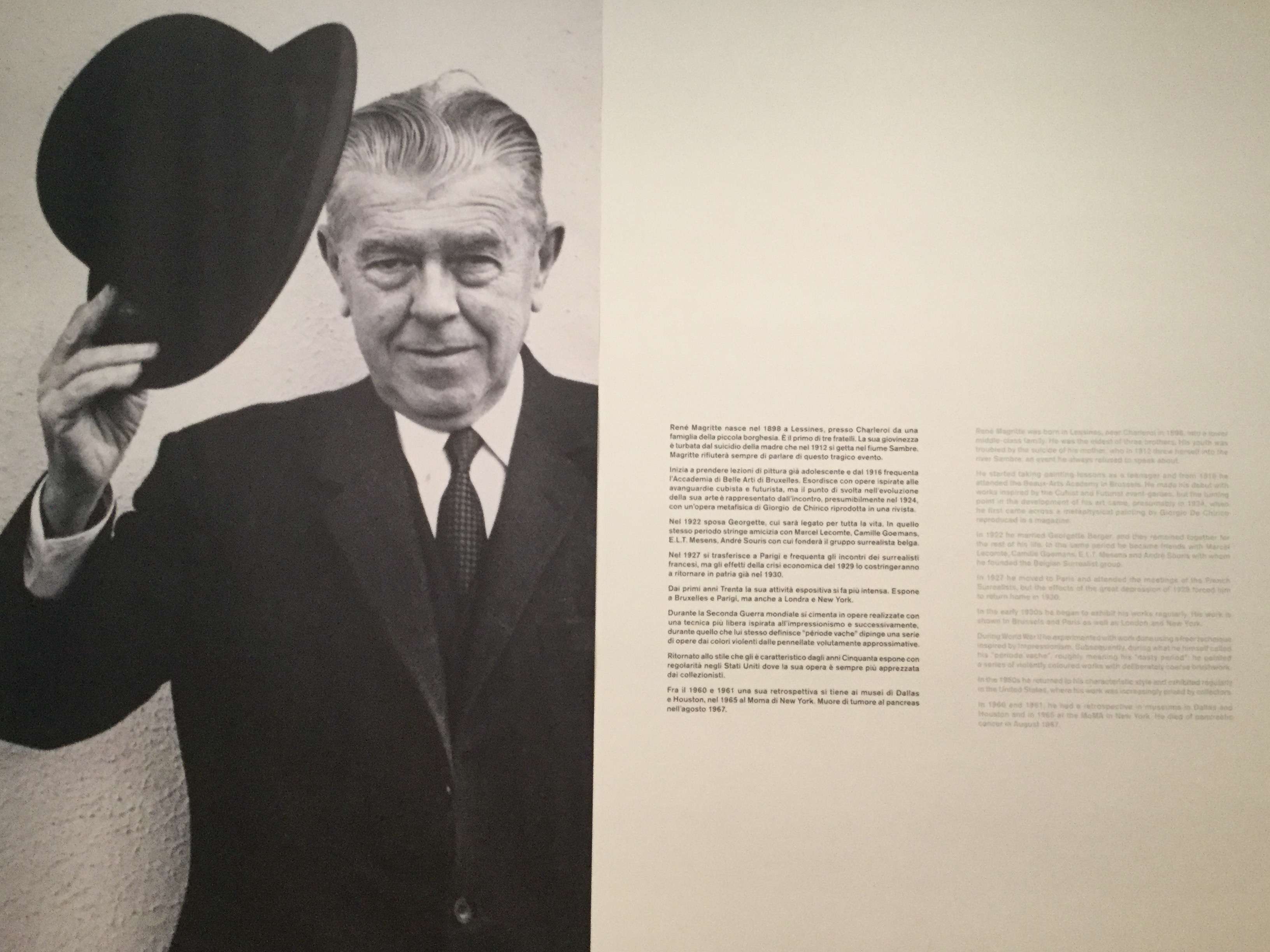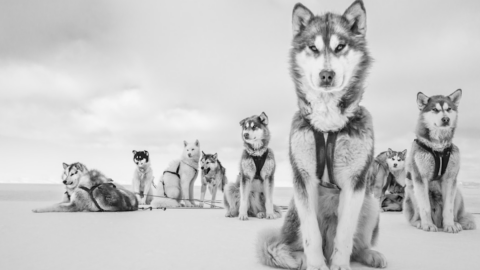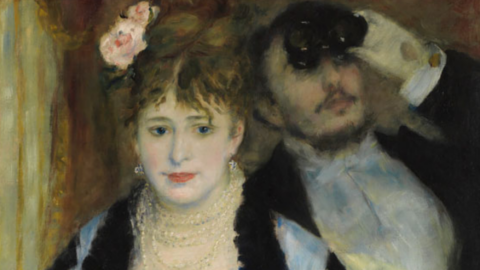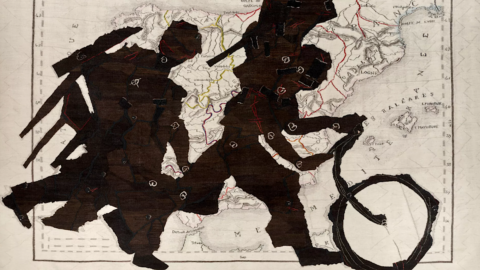Rainy day in a Lugano that hides in the clouds a bit like those that Magritte he painted in several of his paintings. The lake acts as a silent background while some swans dance imperturbably in the leaden waters at an exhibition that takes us back to the conference La ligne de vie (The line of life) is René Magritte held on November 20, 1938, exactly 80 years ago, al Museum Royal of Fine Compaction of Antwerp. It was then that Magritte illustrated those principles where everyday objects could take on a decidedly surreal and disturbing meaning.
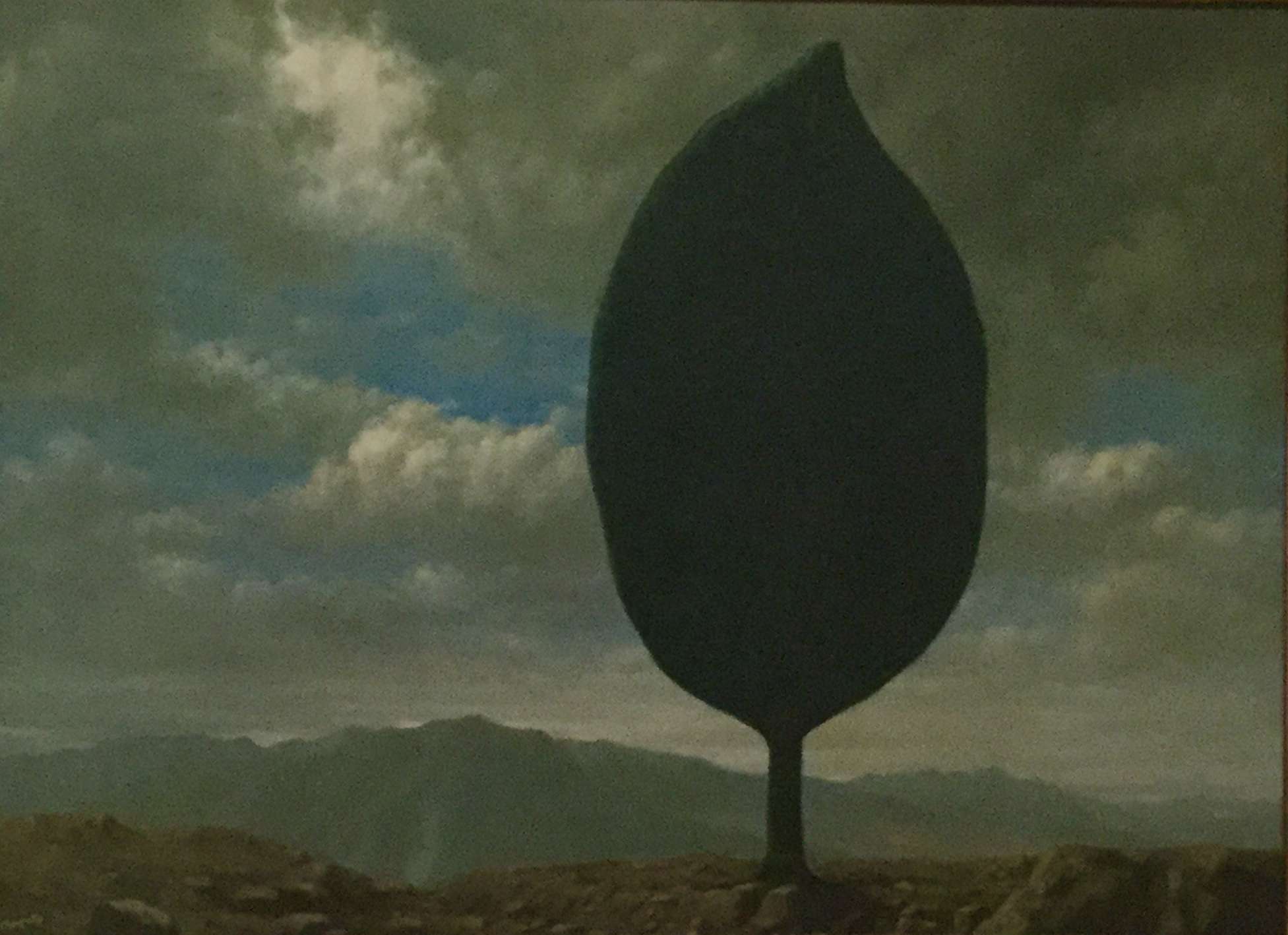
The exhibition runs through the entire life of the Belgian master, the journey begins just before the 20s, where we can already see Magritte's interest in Italian futurism. We recall that in De Chirico, he finds his poetic vein, which we can already admire in a work exhibited here "Les plasir du poete"(1912).
The paintings that Magritte made between 1920 and 1924 are placed as pre-surrealist works, where the aesthetic influences that the painter acquired at the end of his studies are perceived at the Brussels Academy of Fine Arts. But this research of his ends soon, above all after having become aware of the work of Giorgio De Chirico, introduced by the poet Marcel Lecomte. From this moment, Magritte adopts the painting characterized by the "Disorientation”, that is, that instant in which objects become a mystery.
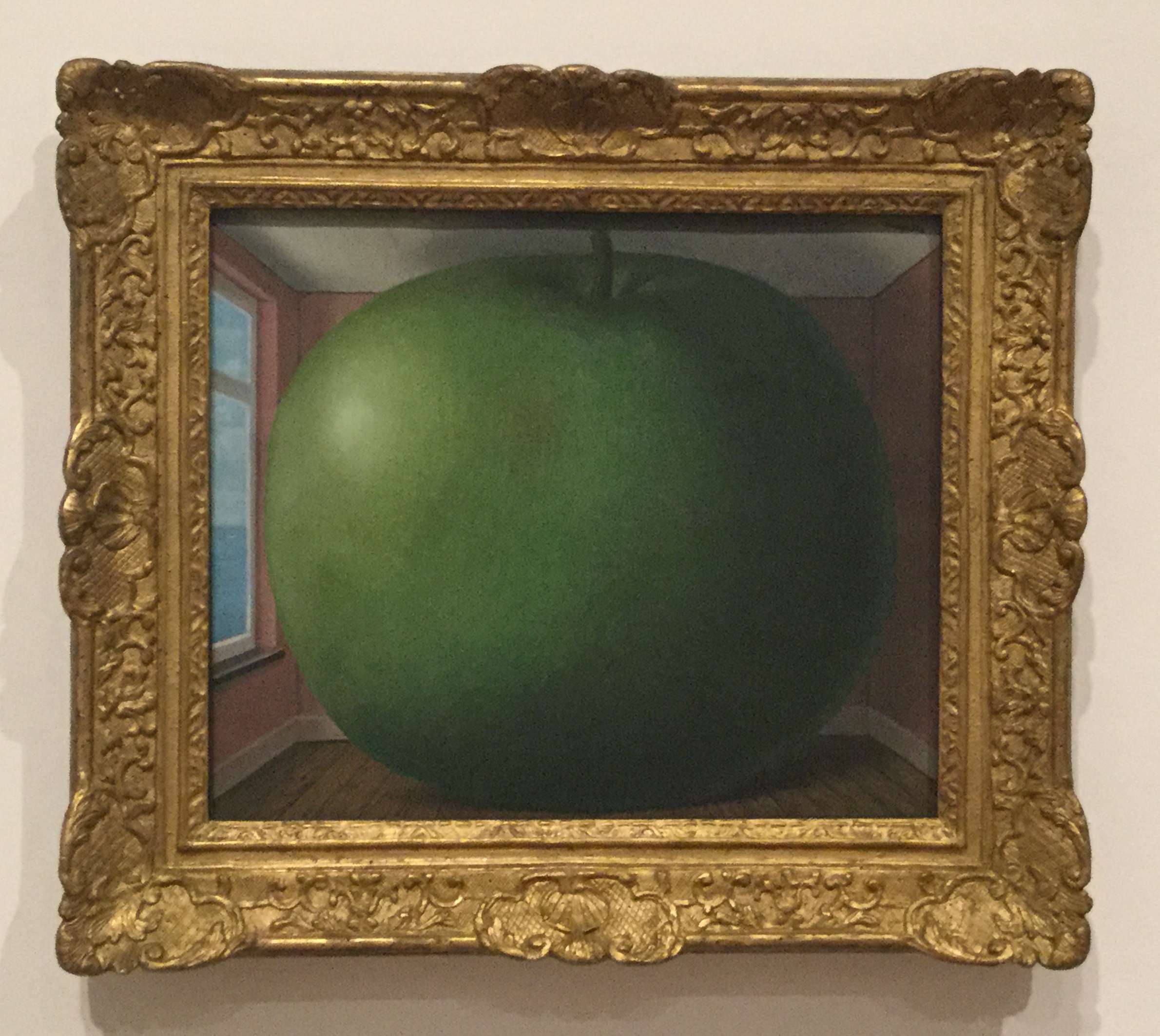
In 1927, after having approached the Surrealist cenacle of Brussels, he holds his first exhibition which attracts several merchants including Van Hecke, who offers him a contract. Later he moved to Paris together with Georgette and his brother Paul. This period will represent a seal of deep friendship with the poet Paul Eluard.
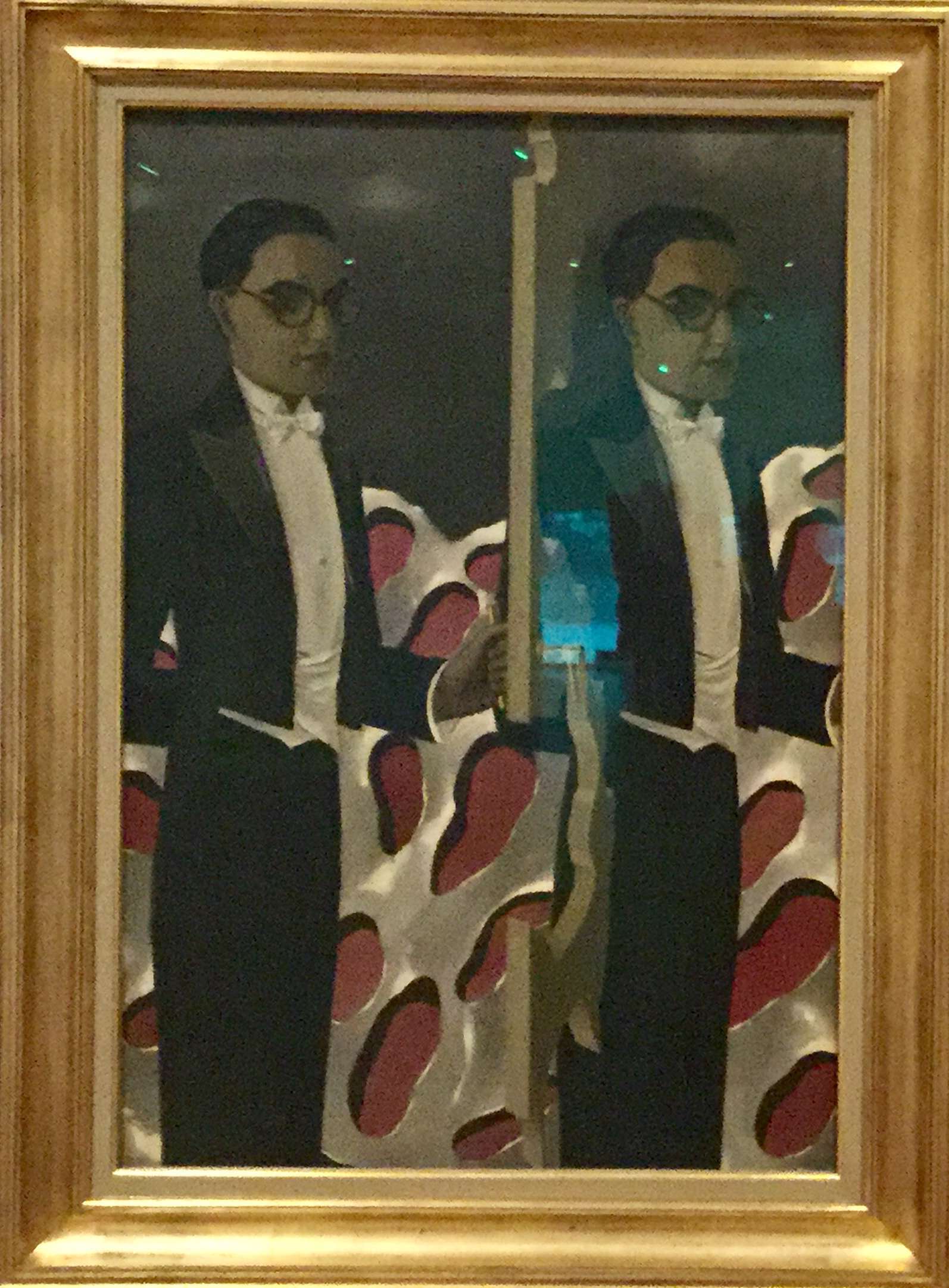
Of this period are works such as "Peintures-mots”, paintings and words, images accompanied by short sentences, where the words are written very neatly, almost in a scholastic way.
To better illustrate the meaning of his research, he draws a "Demonstration" entitled "Les Revolutions Surrealists”, on display we find the original drafts displayed in a bulletin board. Sometimes the name of the object acts as an image, or a word takes the place of the object, almost inviting the viewer to reconstruct the meaning according to the clues that the painter wanted to leave on the canvas.
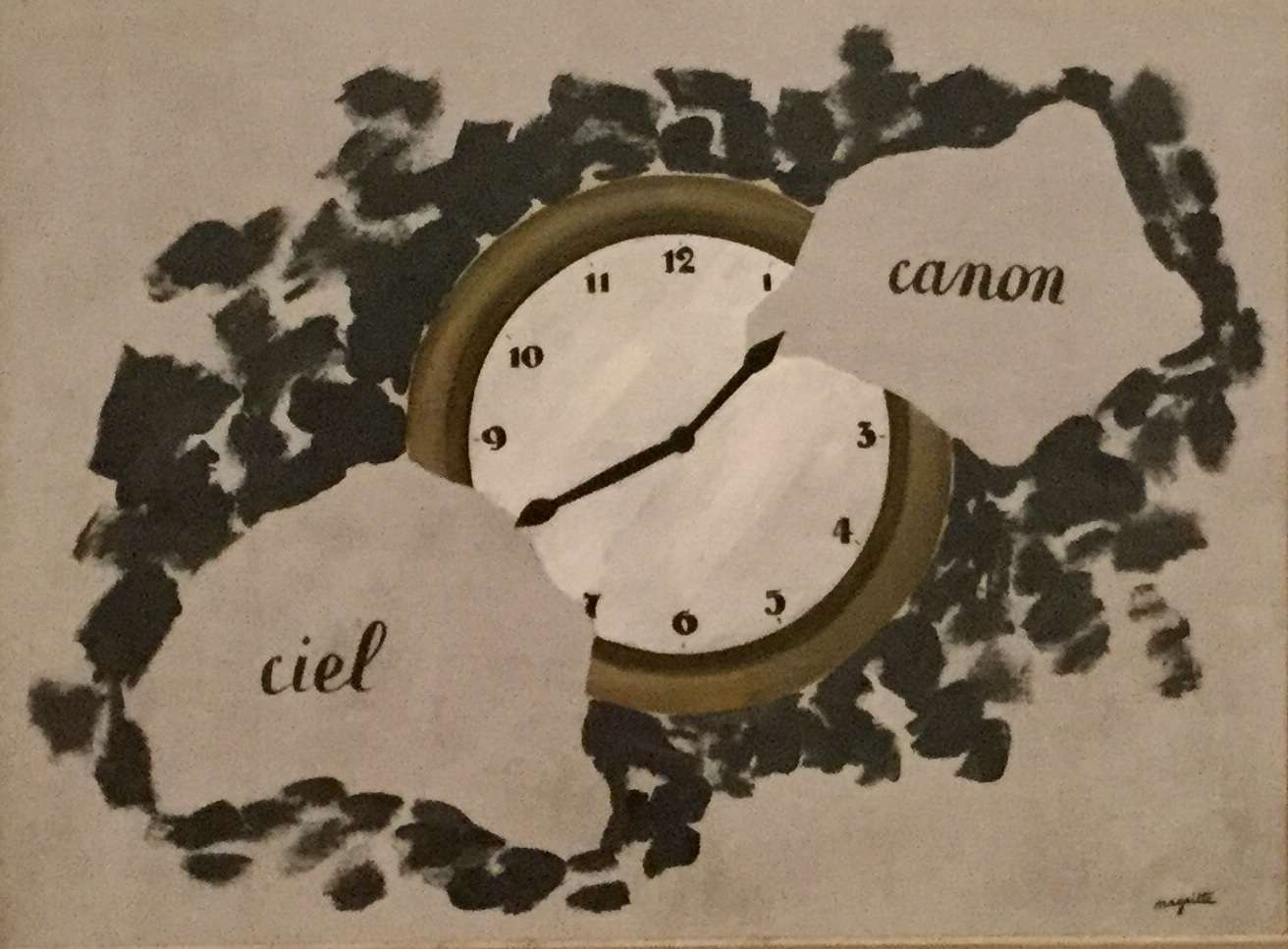
The years between 1933 and 1940 see a style of affinity, where Magritte seeks precisely the elective affinities between the objects that make up the work, such as the cage and the egg.
It will be in 1943 that the artist completely changes his style, the colors become lighter with a brushstroke similar to impressionism. In fact, this period is close to the Renoir period, as if he were looking for a challenge. The works were exhibited almost clandestinely and met with no consensus with attacks by the press under the control of the German occupation. But Magritte did not intend to give up this style and immediately after the war he signed the Surréalisme en plein soleil manifesto, thus abandoning the impressionist period.
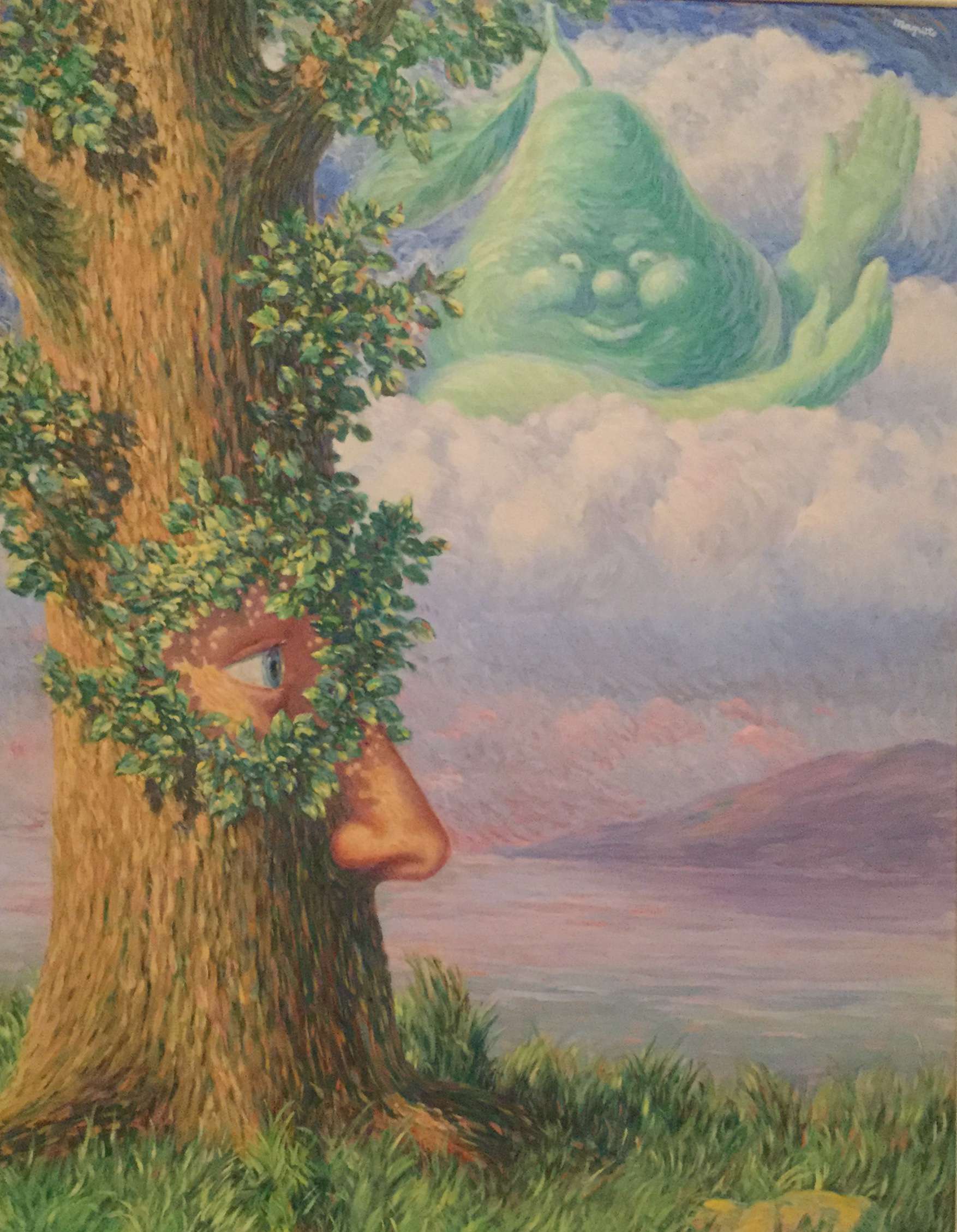
At the end of the forties with the complicity of his friend Louis Scutenaire decides to send works to Paris for an exhibition, but not his masterpieces, but seventeen canvases and twelve gouaches painted almost hurriedly and called "period vache", thus alluding to Fauvism, the style of beasts, to the point that in some the painter deforms them so much that they seem grotesque. The exhibition was received very badly to the point of arousing strong indignation on the part of visitors.
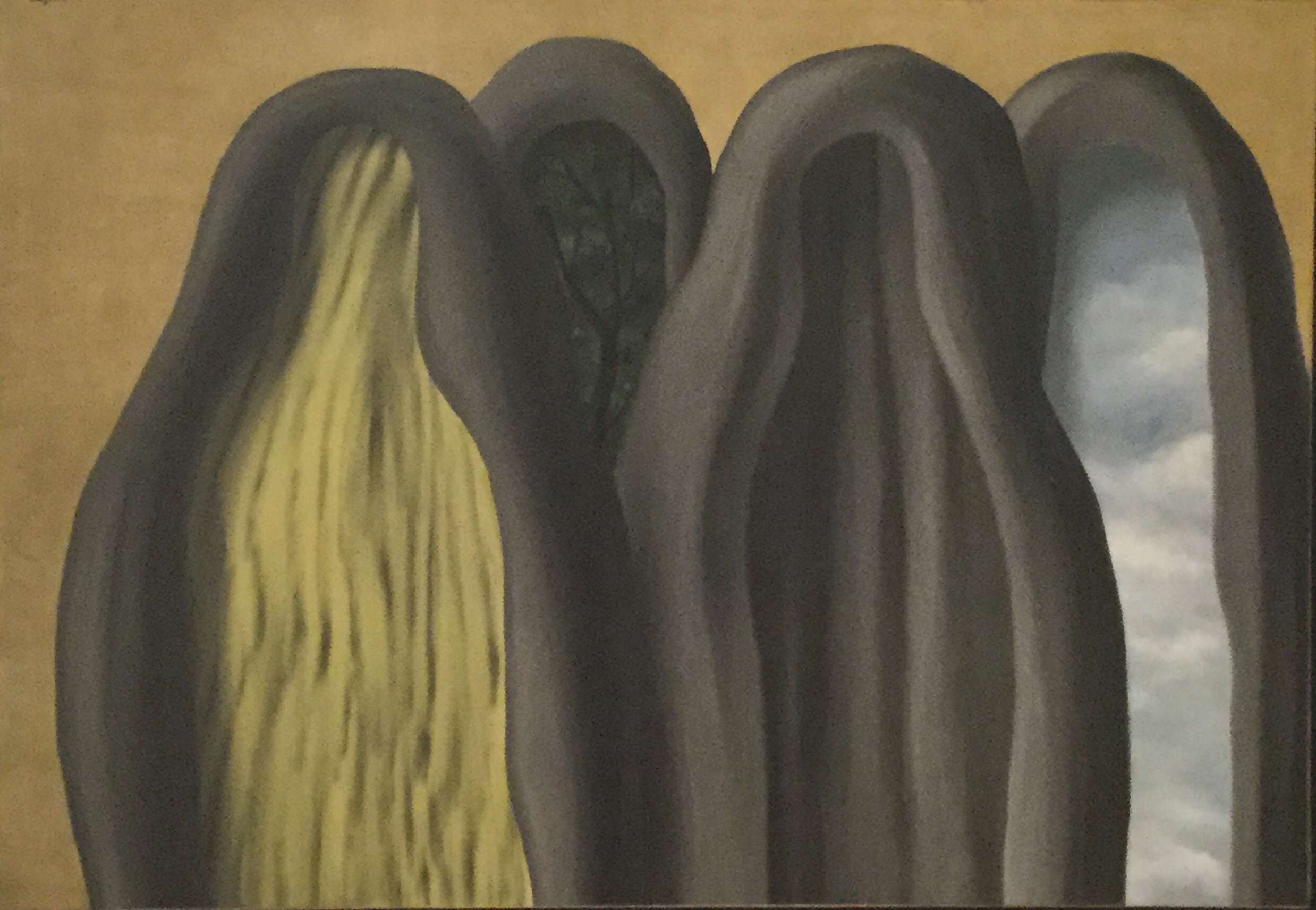
From then until his death, Magritte returned to the pictorial style that was most dear to him, that is, to evoke the mystery in common objects. And to remove them from banality he petrifies them or releases them into the air, almost in the absence of gravity.
His success is now international, his talent is recognized thanks to his merchant Alexander Iolas. In 1965 the New York Museum of Art he dedicates a personal exhibition to him, but his fame is already known.
The exhibition which will remain open until 6 January 2019 is created with the support of the Magritte Foundation and sees the collaboration with Amos Rex of Helsinki.
